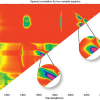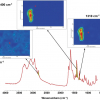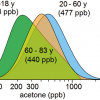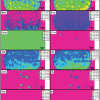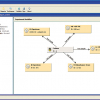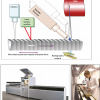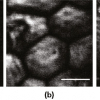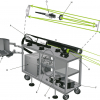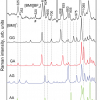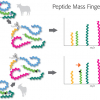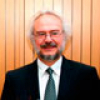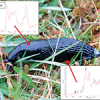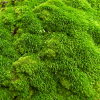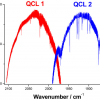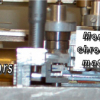Articles and Columns
I recently “discovered” a very interesting radio programme on BBC Radio 4. It is “devoted to the powerful, sometimes beautiful, often abused but ever ubiquitous world of numbers”. A few weeks ago we were asked to say what we were doing while listening to the programme. The next week we were told that nearly 2000 e-mails had been received and this data had been given to information designer David McCandless to turn into a graphic. When this was trailed I got the impression that something new and exciting was going to be displayed and I thought that the graphic would include sound. The graphic is good but rather “ordinary” and I was disappointed. This got me thinking about how we display information. Have we made any advance in the last 25 years? Could sound be used!
We have previously investigated the topographic and quantitative changes in the distribution of trace metals in spinal cords from ALS and control patients. X-ray fluorescence microscopy was used to investigate their metallic nature and distribution in single nerve cells. A deeper understanding of the neurodegenerative processes in ALS requires focus on the biochemical changes occurring in nervous tissue of such a disorder. For this purpose, we have undertaken an infrared microspectroscopy study. While metals are suggested to play a pivotal role in the pathogenesis of ALS, they typically do not occur in tissues as free ions. This results in the presence of the complex mechanisms of metal ions buffering that protect cells against their toxic effects. Metal homeostasis is regulated by several proteins. Such proteins containing metal cofactor are called metalloproteins.
Selected ion flow tube mass spectrometry, SIFT-MS; new horizons in real time air and breath analysis
We conceive selected ion flow tube mass spectrometry, SIFT-MS, primarily as a real-time, absolute, analytical technique that can meet the challenge of the immediate analysis of humid exhaled breath for rapid clinical diagnosis and therapeutic monitoring. This objective has certainly been achieved and the application of SIFT-MS has quickly been expanded into many other areas where real time, immediate analyses of trace compounds in air are desired, as we have demonstrated in recent reviews and which we summarise at the end of this article.
Imaging of organic and inorganic constituents of tablets represents a considerable challenge and no single spectroscopic approach can provide definitive characterisation of all components and/or satisfy key measurement criteria such as sensitivity, specificity, resolution and speed of analysis. Laser ablation in combination with ICP emission spectrometry represents a powerful new tool for imaging elemental distribution in pharmaceutical tablets.
Analytical Information Mark-up Language, better known as AnIML, has been around as a concept for a number of years, but how does an analytical chemist use it in the real lab? A team of R&D scientists at LGC has been finding out.
ISO Standard ISO 17025 is the cornerstone of the “Measured Once, Trusted Everywhere” concept and the accreditation of labs and testing establishment to ISO 17025 by accreditation bodies underpins the credibility. ISO 17025 is all about facilitating the free movement of goods and services and so helps to eliminate monopolies, cartels and all sorts of anti-competitive activities.
Non-destructive, high resolution, sediment core scanners incorporating X-ray fluorescence (XRF) spectrometry are now widely used by sub-disciplines in the earth and environmental sciences and have revolutionised the analysis of sediment cores. These powerful instruments allow the cores to be analysed rapidly with virtually no sample preparation. They can record along-core variations for many elements in the Periodic Table from Al to U and detection limits down to a few ppm can be achieved in favourable conditions depending on the acquisition dwell time.
Here, we focus on new trends in Raman spectroscopy to improve in vivo diagnosis. The use of Raman spectroscopy for real-time diagnosis of medical disease without the need for biopsy is among the most exciting and clinically relevant applications; four recent reports are presented. First, an approach to reduce fluorescent background of lung tissue in combination with a biomedical filtered Raman fibre optic probe was introduced in 2009 by Magee et al. Second, a fibre optic probe was developed for the CARS variant of Raman spectroscopy. Third, functional metal nanoparticles and carbon nanotubes were applied to a small animal model to collect Raman spectra non-invasively utilising the surface enhanced Raman scattering (SERS) effect. Finally, spatially offset Raman spectroscopy (SORS) has been presented as another non-invasive Raman-based method to probe deep bone subcutaneously in an animal model.
The problem of detecting, recognising and identifying explosives at significant standoff distances has proved one of the most difficult—and most important—challenges during recent years, being today, one of the most demanding applications of spectroscopic techniques. The limited number of sophisticated available techniques potentially capable of standoff detection of minimal amounts of explosives is based on laser spectroscopy. Of the recently developed techniques, Raman spectroscopy and laser-induced breakdown spectroscopy (LIBS) are considered significant for their potential for homeland defence applications.
Continuing the series of articles on spectroscopy, we return principally to the UV-visible area of the spectrum, but this time to the science of luminescence (fluorescence and phosphorimetry), in all its many forms. Given the diversity of the application areas and instrument types available, in such an article we can only briefly give an overview of the topic and interested parties are, therefore, recommended to follow-up the listed references for more in-depth discussion on the points raised.
<p>In last year’s <a href="https://www.spectroscopyeurope.com/td-column/and-now-something-complete…">August/September</a> issue of <em>Spectroscopy Europe</em> I wrote a column about my “discovery” of computational chemistry and asked if anyone was interested. A satisfying number of readers answered the on-line survey with very positive comments but none more so than Patrik Johansson who e-mailed me about his delight with the column and to assure me that there was “indeed a bunch of scientists out there that do work on IR (and Raman) using both experimental and computational techniques—I am one of them”! This column is the first result of the ensuing e-mail conversation and is due to Patrik. I remain excited by the possibilities of computational chemistry particularly as Patrik thinks that an approach to NIR spectroscopy is indeed possible.
ISO 17025 has been with us now for 12 years and in some industry sectors it is getting hard to find a commercial laboratory offering chemical testing that is not accredited to ISO 17025 for some or all of its scope. In just 12 short years the importance of “quality management” to a laboratory has undergone a seismic shift.
A look back: where did ISO 17025 come from?
Jean-Philippe Echarda and Loïc Bertrandb
aLaboratoire de recherche et de restauration, Musée de la musique, Cité de la musique, 221 avenue Jean Jaurès, 75019 Paris, France. E-mail: [email protected]
bIPANEMA, synchrotron SOLEIL, Saint-Aubin, 91192 Gif-sur-Yvette cedex, France
This year the International Barcode of Life initiative (IBoL) plans to begin an ambitious programme to barcode the DNA of more than five million specimens representing at least 500,000 species in five years. Molecular barcodes exploit the fact that molecular sequences offer an independent method to identify a sample. Such molecular barcodes have widespread application in systematics, biodiversity, forensics and even food science. Molecular barcodes tend to be based upon DNA, which with the advent of new technologies offers a fast and efficient means of identification. Proteins too have been used in the past for molecular identification, most commonly exploiting the exquisite specificity of antibodies to discriminate targeted proteins. Recently the idea of using protein mass spectrometry to fingerprint samples has been used to target samples in which processing or decay has destroyed the DNA.
Christmas is a time of giving and it is with great pleasure that we are able to report the news that Dr Michael Heise, a friend of many years both personally and of this column, has recently been awarded the title of Honorary Professor at the University of Applied Sciences of South-Westphalia in Iserlohn, Germany.1 Mike has been regarded for a long time as an “Internationaler Experte für Infrarot-Spektroskopie”, as the Iserlohn University of Applied Sciences put it on their press release!
The growing use of Fourier transform infrared (FT-IR) spectroscopy as a tool for quality checking amongst other things foodstuffs, industrial products and pharmaceuticals begs the question of how this technology could be applied to quantifying aspects of the internal environment of living organisms. To do this requires knowledge of the types of exudates and secretions that organisms produce. Usefully, all organisms do this and, as such, the potential to look into the internal environment of living organisms is now being realised. My particular interest is in molluscan mucus as a measure of both species identification and environmental monitoring. This interest has led onto considerations of how monitoring of mucus could be used in other organisms, particularly humans. This article hopes to provide a brief current overview of the use of FT-IR spectroscopy in the investigation of mucus from a variety of organisms.
The intense development of industrial and urban areas in the absence of accurate measures to control pollution sources is often the cause of several environmental problems: dispersed and undetected chemical waste problems, in particular trace elements such as heavy metals, may cause freshwater, soil and water-table contamination. Such events are rarely detectable by sporadic analyses on water samples, since trace element concentrations are often below the instrumental detection limits and/or quickly change in space and time.
James A. Calladine and Michael W. George
School of Chemistry, University of Nottingham, University Park, Nottingham, NG7 2RD, UK. E-mail: [email protected]
In urban environments, where the majority of the human population lives, air pollution is a major threat to human health. In many countries and regions of the world, this has led to the implementation of regulations to control the emissions of air pollutants and limits for the allowed concentrations of different types of air pollutants. The limits are set at levels at which harm to the health may occur if the limits are exceeded. One of these pollutants is aerosol particles. In most cases, the environmental quality standards limit is set to a certain mass concentration of particles of a certain size.
John Hammond
Starna Scientific Ltd, 52–54 Fowler Road, Hainault Business Park, Hainault, Essex, IG6 3UT, UK
The Irish writer George Bernard Shaw once said: “England and America are two countries divided by a common language”. Whilst this statement generally refers to the over 4000 words in everyday use in the United States that are not in British English, in the scientific world “is it metre or meter”, or for spectroscopists, nanometre or nanometer?

